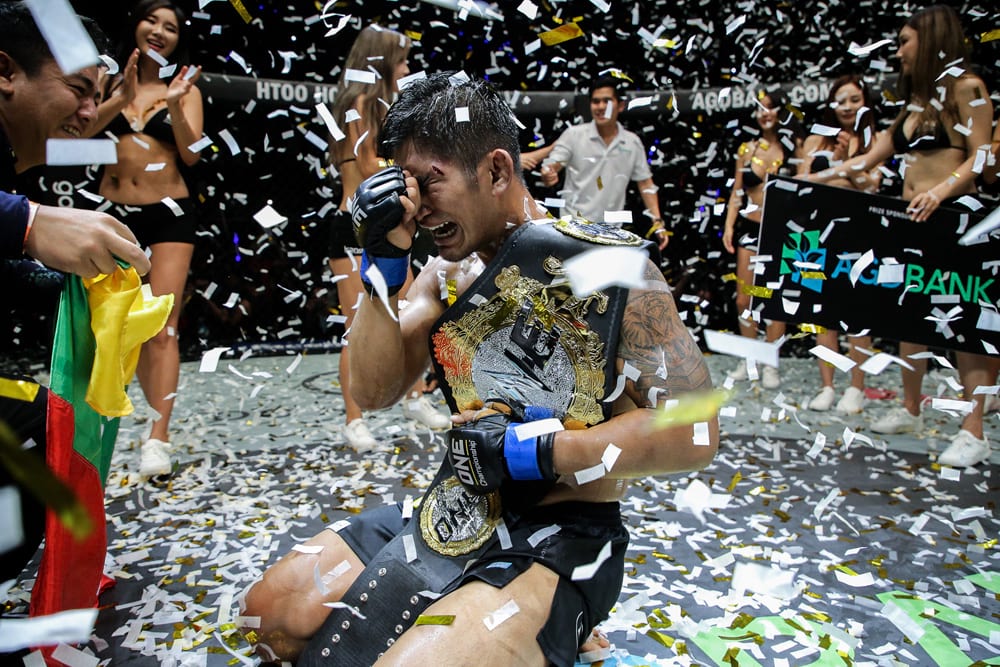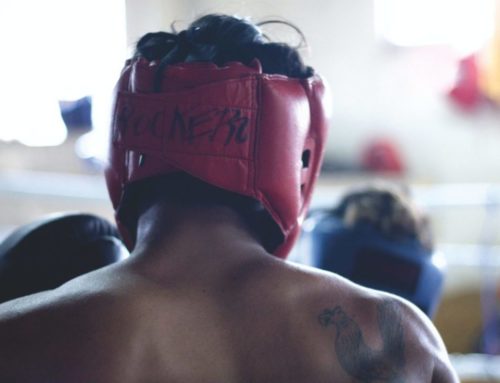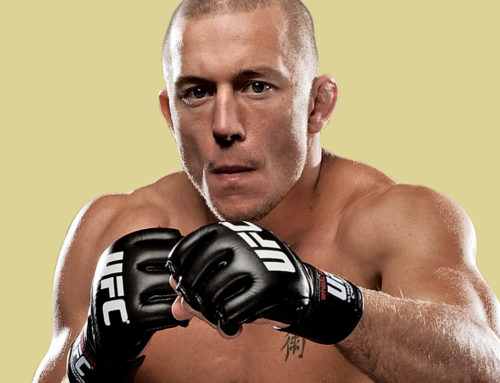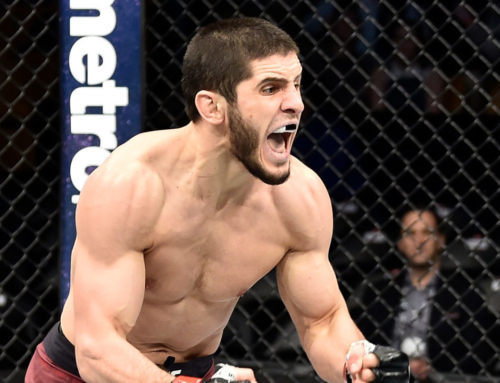The UFC is the biggest MMA game in town across North America, Europe and most of the Western world. It’s still the world leader in terms of talent and revenue. Look east, however, and it’s not the same dominant force. Though it has promoted successful shows in Asian territories, a closer look at the world’s most populous continent shows a different mixed martial arts brand taking off in a way that the planet’s premier combat sports promotion is yet to achieve. ONE Championship is filling arenas in markets untapped by the Octagon from Beijing to Bangkok, and is on its way to becoming the continent’s first multi-billion-dollar sports property.
Culture shock
ONE’s rapid rise is extraordinary. In just five years it has established itself as a fixture on major Asian television networks and at arenas in some of the most populous markets in the region. After its 2011 debut in its home of Singapore, by 2014 it had expanded to Indonesia, Malaysia and the Philippines, attracting five-figure attendances to arenas and viewers in 60 countries.
The three years since saw further expansion at an exponential rate. The ONE cage was introduced to Taiwan, Dubai, Cambodia, Myanmar, mainland China and Thailand, while it doubled the number of nations it reached via its broadcasts and increased its viewing share by five to 10 times in various markets.
The reason for that success, says Chatri Sityodtong, the company’s founder, chairman and CEO, is its core values. “UFC is very much marketed as a sport,” he explains. “ONE Championship’s DNA is about the celebration of true martial arts. Our entire marketing, messaging and ethos of the two companies are totally different.
“In America, martial arts are not part of the culture, history and tradition. You don’t send your kids to taekwondo school as a default, you send them to play football or baseball.”
Cultural differences also play a major part in the way fights are promoted. In the West, controversy is king. Trash talk and weigh-in melees are celebrated. “In the Eastern Hemisphere, that doesn’t work,” says Sityodtong. “Asia is a continent of humility. If you look at all the greatest actors and sporting heroes, one of the common denominators is that they’re all humble, kind and gentle. That’s something Asians just care about.
“We’ve focused on the life stories of our athletes and the value of martial arts, humility, integrity, discipline, courage, confidence – all the different aspects.”
Sityodtong highlights Eduard Folayang, ONE’s lightweight champion, whose incredible story, combined with his MMA ability, makes him the ideal poster boy for the organization.
“Here’s a guy who grew up in extreme poverty. His parents were illiterate and he had nine siblings; five died because they didn’t have access to medical resources and he was the first to become universally-educated – he became a high-school teacher. He did martial arts and eventually became a professional and then beat Shinya Aoki for the title. We tell that story over and over in different formats and that’s how we sell fights. We don’t sell fights, we sell heroes.”
“It’s not that we discourage the trash talk,” adds Rich Franklin, former UFC champion and now ONE vice president. “I would want our athletes to be just true to who they are. It’s just that for the most part they’re truly humble, respectful people.
“There are kids in the Philippines – even Indonesia – that look up to a guy like Eduard Folayang. They think, ‘I come from a similar background and can do the same thing that he’s done in life.’ I think that’s the difference in our product. We built something that resonates with our fanbase.”
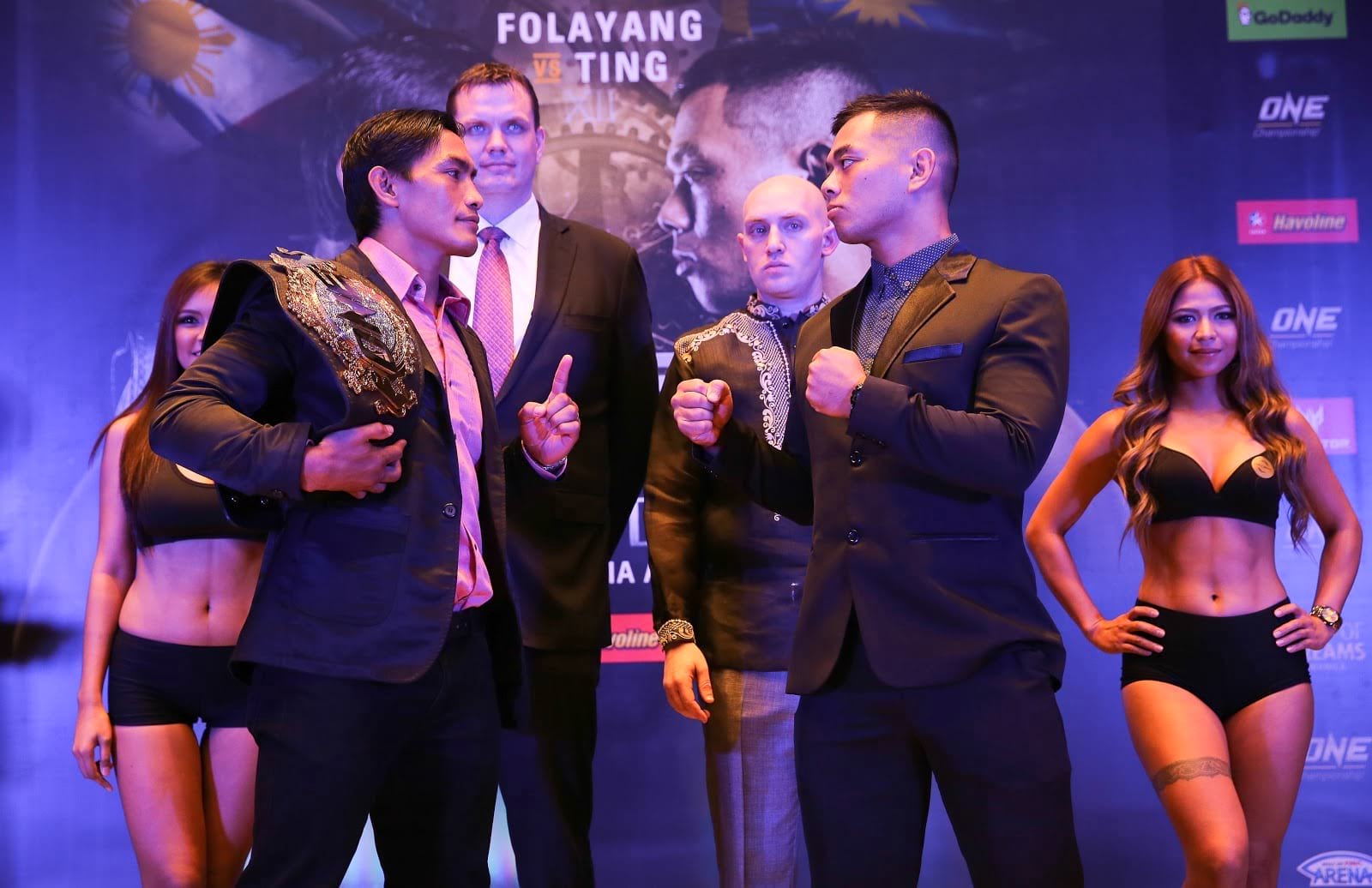
Stars align
Cultural resonance is just one piece of the puzzle. While MMA is still growing worldwide, it hasn’t caught on around the globe as quickly as it did in the Americas, which have a galaxy of stars. Almost 90% of the UFC’s champions hail from the US and Brazil. Canada had GSP. Even Japan had Kazushi Sakuraba, Hidehiko Yoshida, and later, champions like Takanori Gomi to capture the public’s imagination during the nation’s kakutogi boom.
Places like Singapore have a history of supporting foreign sports stars like David Beckham, Michael Jordan and Tiger Woods. But when they have one of their own to cheer for – take Manny Pacquiao in the Philippines – it’s a whole different ball game.
“It’s all about local relevance and global appeal,” says Sityodtong. “That’s the secret formula. UFC did a show in Singapore a few years ago and the main event was Tarec Saffiedine vs. Hyun Gyu Lim and the attendance was very undersold. The card was predominantly American. People didn’t give a damn.”
Compare that to ONE Championship: Dynasty of Heroes in May, which sold out the Singapore Indoor Stadium thanks to its headliner, Angela Lee. The atomweight champion may have been born in Canada and lived in Hawaii for most of her life, but thanks to her Singaporean father, the sovereign city-state has claimed her has one of their own.
Demand for her is unparalleled. The local media swarms around her and lights her up with the relentless flash of cameras at press events. Fans scream for pictures and the opportunity to meet her. “Honestly all this media attention is crazy,” she says. “I still get blown away by it, but at the end of the day, I still feel like a normal girl. This is all kind of nuts.”
The same is true all over the region. When ONE goes to Pnom Penh, the biggest cheers are for the Cambodian fighters; Muay Thai specialists from Thailand attract the most attention in Bangkok. But when a fight card takes place in Burma (Myanmar), fans reach a different level of frenzy.
“Myanmar has been a closed economy for its entire history,” explains Sityodtong. “Literally only the last six or seven years it’s opened up, so they’ve never had a sporting hero ever – ever – on the global stage. When Aung La (N Sang), who’s a Myanmar refugee, returned home from America to compete in Yangon, the entire country went ballistic. The ratings went crazy.
“Whenever he fights anywhere in Asia, the entire Myanmar population watches it. That’s an extreme case. David Beckham can be a hero, but when you have Aung La, it’s on another level. It’s like the Irish with Conor McGregor. It’s another level of passion and pride and honor and glory for your country. We went there not knowing what to expect, but now Aung La can’t even walk the streets. He’s like Michael Jordan. He’s that big.”
“You need to go to Myanmar sometime when Aung La is fighting because that guy walks on water in that country,” adds Franklin. “I’ve never seen anything like it. Those Burmese fans can make three times as much noise. I’ll go decibel-for-decibel with anybody on that.”
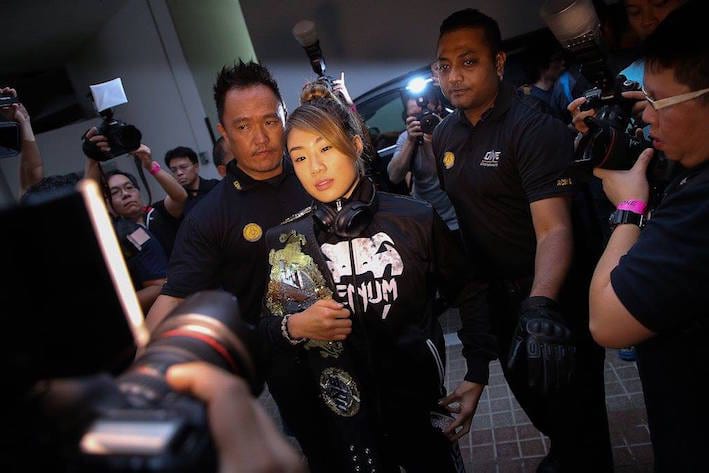
Showtime
Of course, none of the local athletes and their approach to promotions would mean anything unless they could actually fight – and they certainly can.
Sityodtong admits that many of the fighters’ ground games may be underdeveloped compared to the level in the Americas, but says their standup is way ahead. Take, for example, former strawweight titleholder Dejdamrong Sor Amnuaysirichoke, a former two-division Lumpinee Stadium champion who retired from Muay Thai 10 years ago at the age of 28 after 350 – yes, three hundred and fifty – pro fights. You’d be hard pressed to find anyone else in MMA with that kind of striking experience.
Furthermore, the Global MMA Rule Set that ONE uses – a combination of Unified and Pride rules, where soccer kicks and knees on the ground are legal – is striking orientated. It’s designed to celebrate authentic martial arts from the countries it promotes in, including leithwei from Myanmar, silat in Indonesia, Muay Thai in Thailand and kung fu in China.
Not that the ground game is ignored. The promotion’s champions include elite BJJ practitioners like Roger Gracie and Bibiano Fernandes, as well as a world-class wrestler in Ben Askren. And while Asian fans are definitely more inclined to appreciate the arts of punches, kicks, knees and elbows, they’re as educated about grappling. Takedowns and transitions and applauded in the same way as any other established MMA market.
Rules and styles combine to entertain the fans with great fights. This is where ONE Championship excels. It has a case for being the pound-for-pound most exciting promotion on the planet. On that Dynasty of Heroes Card, eight of the 10 fights ended with a finish, which continues a trend that ONE started in its earliest days.
“Matt Hume has done a great job matchmaking. We’ve always had exciting events and we have nearly an 80% finishing rate with our athletes,” Franklin says.
Then there’s the event production. Though not on the same scale as Pride, it is more reminiscent of the iconic Japanese promotion than any of the current lot doing big things in the West. There’s an opening ceremony where all the fighters are lined up and introduced to the crowd with fireworks. Then, every fighter has their own personalized introduction on an enormous screen. Between fights, on the occasions that video packages aren’t playing, the ring girls are up on the side of the cage, dancing as an announcer in the spirit of screaming Pride lady Lenne Hardt shouts for the thousands in attendance to make noise. It’s a real show that enhances an evening that didn’t even need much enhancing to begin with considering the feverish reaction for the victorious hometown heroes.
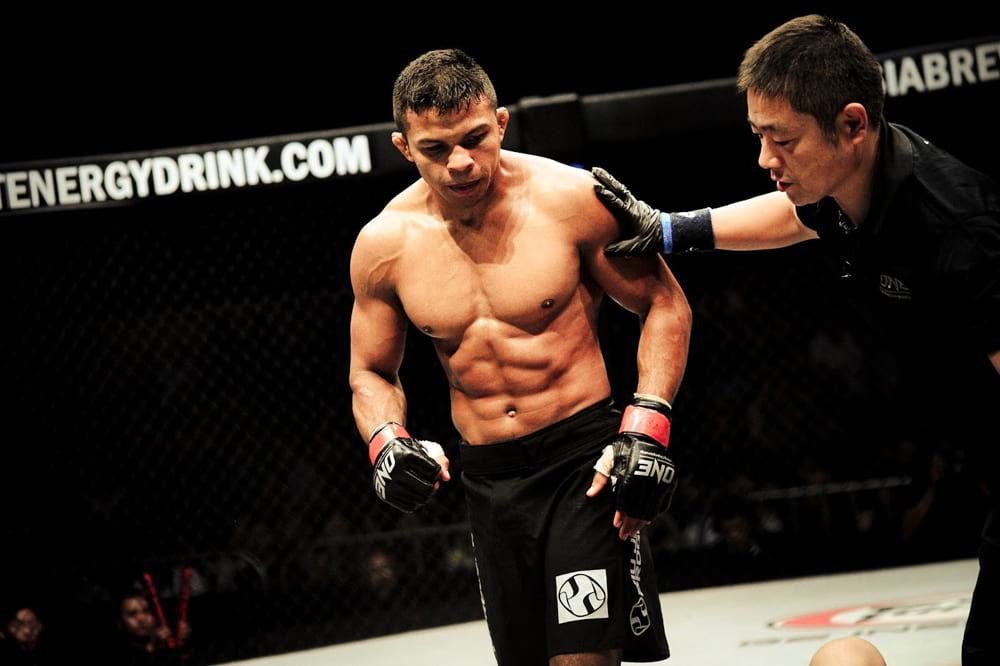
Blowing up
The future looks promising for ONE. It’s far and away the number one player in Asian MMA and it still has practically unimaginable untapped potential for greater success. So much so, Europe or the Americas is not even on the radar right now.
“We’re 100% focused on Asia,” says Sityodtong. “Asia is four billion people and the home of martial arts for 5,000 years. There are two billion viewers in the same time zone in Asia. When the GDP per capita catches up with the rest of the world, it will be by far the largest media market in the world. UFC has been able to create a multi-billion dollar business off of 300 million people in America. We have four billion people.
“Let’s say 10% of Asians become fans of ONE Championship and they buy one $10 T-shirt per year – that’s $4 billion in revenue.”
That may seem ambitious, unrealistic by UFC standards, but the company is focused on breaking into the mainstream in every way possible. In 2012, it announced a deal with ESPN Star Sports (later rebranded as Fox Sports Asia) – described as Asia’s largest ever MMA media deal.
That means the ONE product is in homes on TV all over the hemisphere as well as through online portals in more technologically advanced nations. The results are impressive.
Sityodtong breaks it down: “The top global sports properties – EPL (English Premier League soccer), Formula-1, NBA, UFC – typically have a TV ratings share of 1-6%. ONE has anywhere from 11, 12 as high as 20%.
“We went back-to-back with Conor McGregor vs. Eddie Alvarez – the biggest card of the year. They did a 6% ratings share in the Philippines. We did a 20% share. It’s not on the same page.”
That is no mean feat. Every country has its challenges with different religions, customs, social norms, governmental systems and ways of doing business. However, ONE is not entering new markets unarmed. Backed by the first sports investment by Singaporean wealth fund, Temasek – which has a portfolio of $180 million – it can make inroads with a level of credibility other aspiring MMA superpowers can’t match. It also focuses on mainstream media for publicity, which combines with the presence on major TV networks to capture the minds of the masses.
Sityodtong describes it as a “harmonious” approach. “We want to work with the governments and media broadcasters, athletic community, the fans and the business community from that country – a big point the UFC has missed because both their COOs were American and that doesn’t work,” he says. “It’s like trying to get an Asian guy to come to America who’s never been to America and say they’re going to bring an Asian product and ignore all social norms of America.”
ONE has done everything right. It’s brought MMA to new markets where it has excelled. He adds: Our view is that a global duopoly has emerged regionally. The UFC has the dominant share in the Western hemisphere and ONE Championship has the dominant share in the Eastern Hemisphere. It’s similar to Amazon and Alibaba or Apple and Samsung. There’s going to be always a player that’s dominant in each region in every sports property.”
The end of Pride was seen as the end of multiple MMA superpowers, but ONE is proving there is room for another major force in this sport, one that can coexist with the UFC. If it maintains its current trajectory, we could be looking at yet another promotion valued at $4 billion.

